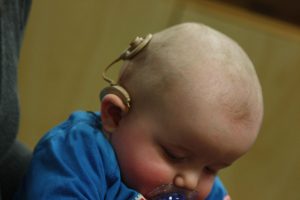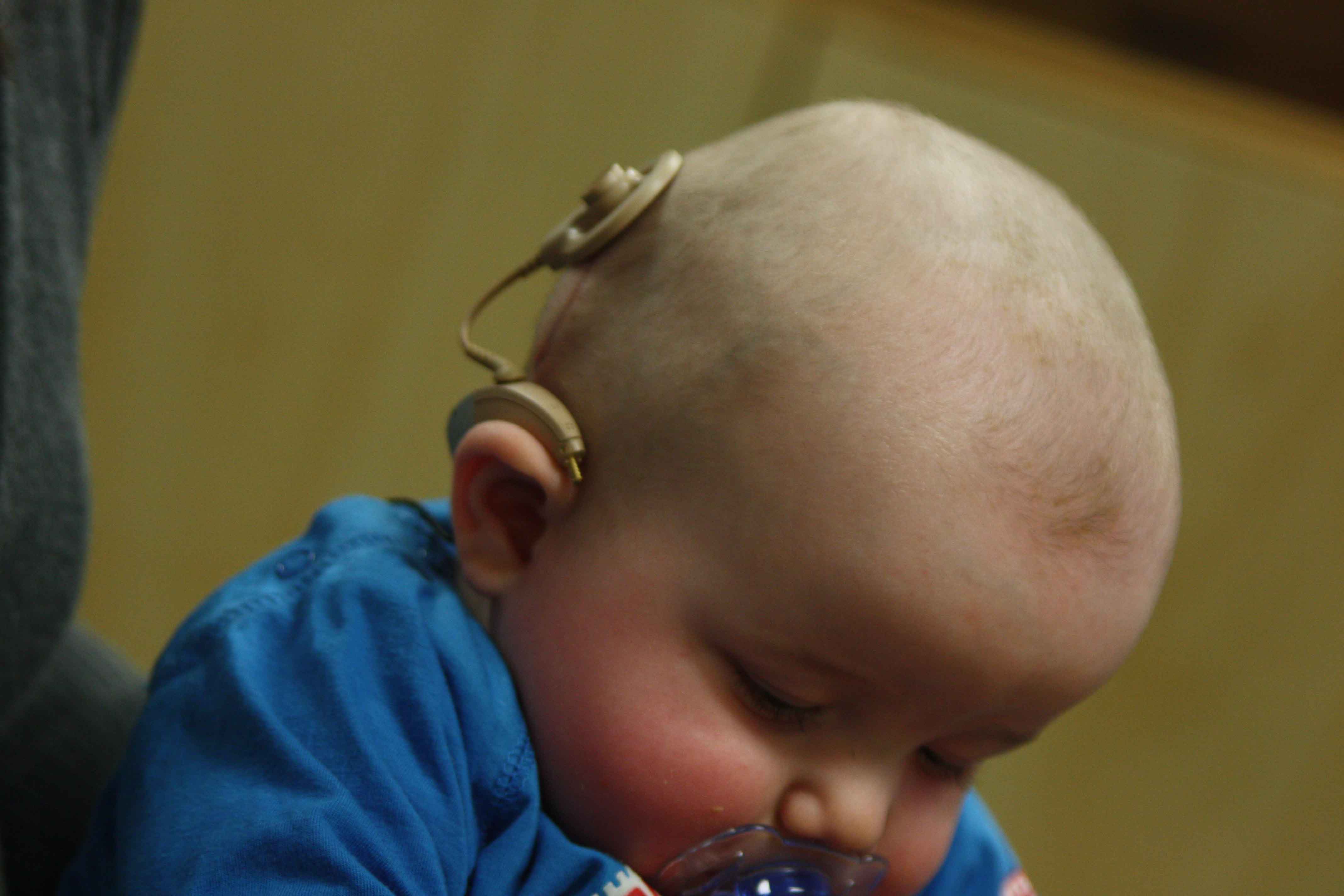This post is also available in Dutch.
Many people think cochlear implants, high-tech medical devices that help the deaf perceive sound, are a miracle cure for deafness— but they are often not.

“A deaf baby with a Cochlear Implant” Picture taken by Bjorn Knetsch (License: CC By-ND 2.0)
If you google “cochlear implant,” you will come across thousands of videos showing reactions of deaf or hard of hearing people after their implant has being activated. Babies’ faces light up when they hear their parents’ voices for the first time, and adults break out into tears of joy after hearing their loved ones. So are cochlear implants really such a gift as it appears to be in those videos?
What is a cochlear implant and how does it work?
A cochlear implant is a surgically implanted electronic medical device that replaces the function of a damaged inner ear. Unlike hearing aids, which make sounds louder, cochlear implants bypass the damaged cells of the inner ear (cochlea) to provide sound signals to the brain, by electrically stimulating the nerve for hearing (cochlear nerve). This stimulation can help deaf or severely hard of hearing people perceive sound.
Doctors’ cure for deafness
Over the past 30 years, the number of people who have a cochlear implant has grown immensely. Many doctors, who see deafness as a physical disability, have been promoting cochlear implants as THE cure for deafness. A majority of deaf babies, nearly 92%, are born to hearing parents, and hearing parents often trust and follow doctor’s orders when cochlear implants are advised. Hearing parents frequently struggle with the concept of their child being deaf, which makes the implant a compelling choice: it offers “normal” communication between the parents and their child.
When children are implanted at an early age there’s a good chance that they will grow up acquiring and understanding speech. Therefore, it almost sounds like the perfect solution for the deaf. However, in reality, deaf people do not immediately understand speech effortlessly after the device has been switched on. In fact, the surgery is only a small piece of the puzzle. They need to spend months, even years in speech therapy, so that they learn how to deal with this new and unfamiliar sensory input. Therefore, a cochlear implant means hard work and intensive training, rather than an easy push of a button.
Do deaf people need a “cure”?
Many deaf people would answer with “No!” to this question. Like any other culture, deaf people have their own history, heroes, traditions, values, and most importantly, a rich and expressive language (in the form of Sign Language; for more info on sign language have a look at this blog). They are Deaf—with a capital D, indicating an identity rather than a medical diagnosis—and are proud of it! They are just happy with the way they are.
However, this is not meant as an argument against cochlear implants. Plenty of people are happy and successful with their implants. There is just no one perfect solution that works for every Deaf person. For some, an implant allows them to communicate over the phone (without using video chat). For others, life is just fine without cochlear implants.
This blog was written by Francie. Edited by Jeroen and Marpessa.
